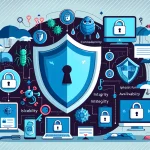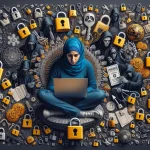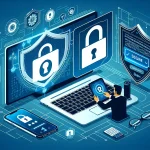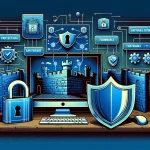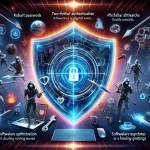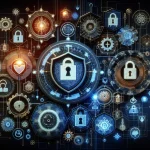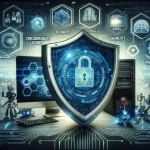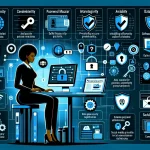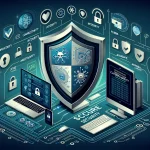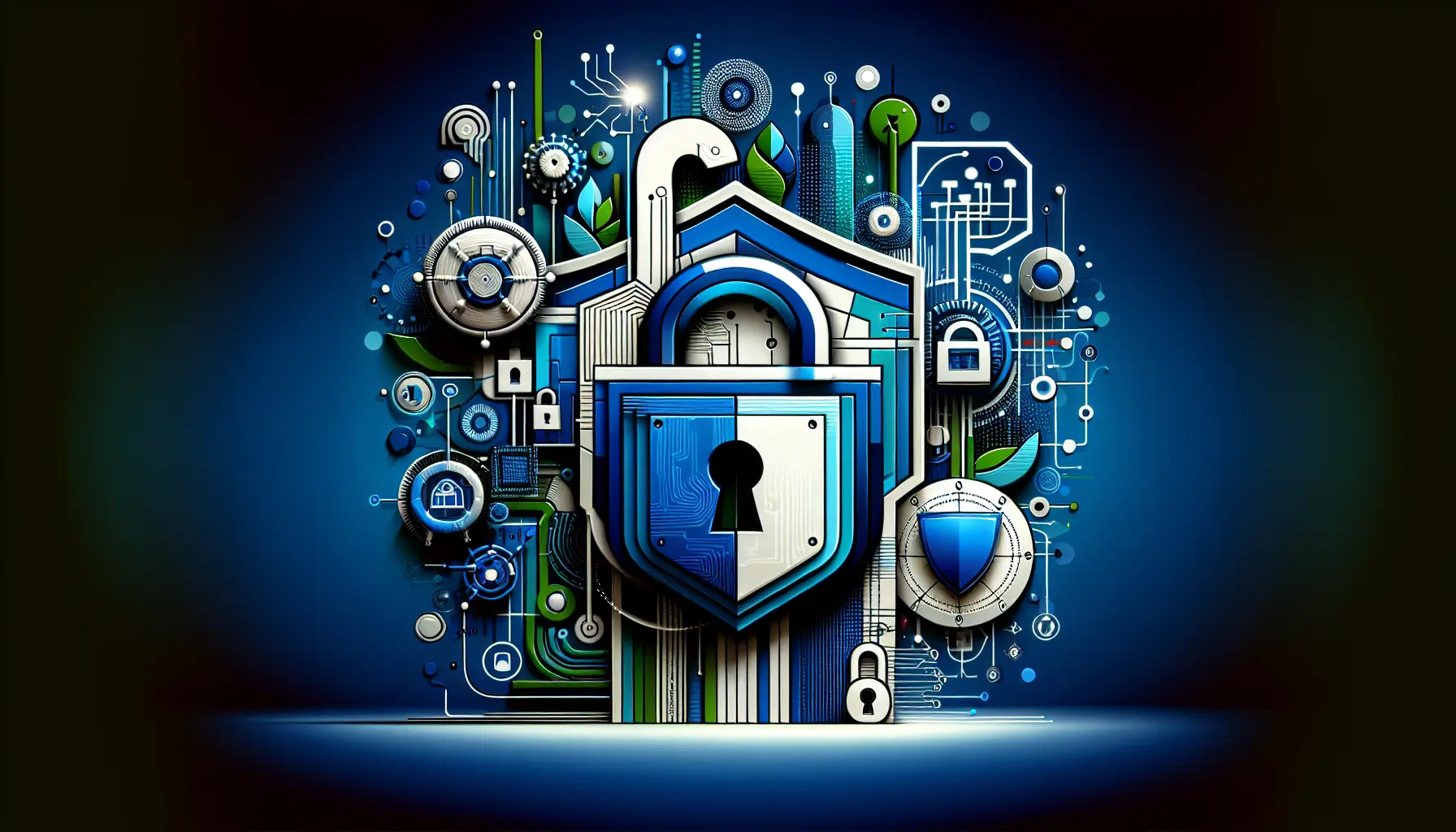
Estimated reading time: 8 minutes
Key Takeaways
- Understanding Cybersecurity: It's essential for protecting your digital life from various threats.
- The CIA Triad: Focus on confidentiality, integrity, and availability to safeguard your information.
- Common Threats: Be aware of malware, phishing, and social engineering tactics.
- Security Practices: Implement strong passwords, keep software updated, and use security software.
- Safe Online Habits: Always verify website security and be cautious with personal information.
Table of Contents
Why You Need to Know About Cybersecurity
Think of cybersecurity like digital self-defense. With cyber attacks targeting everyone from large corporations to individual users, knowing how to protect yourself online isn't optional anymore – it's essential. This guide breaks down cybersecurity basics into simple, actionable steps anyone can follow.
What Exactly is Cybersecurity?
Cybersecurity means protecting your digital life from threats. Whether you're checking email, shopping online, or using social media, cybersecurity practices help keep your personal information safe from criminals who want to steal, damage, or misuse it.
The stakes are real: Identity theft affects millions annually, while data breaches expose sensitive information like credit card numbers and passwords. Good news? Basic security habits can prevent most attacks.
Core Cybersecurity Principles: The CIA Triad
Security experts use three fundamental principles to protect digital assets:
- Confidentiality: Keeping private information private. Example: Password-protecting your email so only you can read it.
- Integrity: Ensuring information stays accurate and untampered. Example: Preventing hackers from changing your bank account balance.
- Availability: Making sure you can access your data when needed. Example: Having backup copies of important files.
For more information, visit Simplilearn.
Major Cyber Threats You Should Know About
Malware
Malicious software comes in many forms:
- Viruses that corrupt files
- Spyware that steals personal information
- Ransomware that locks your files until you pay
Phishing
These scams trick you into revealing sensitive information:
- Fake emails claiming to be from your bank
- Text messages about “suspicious account activity”
- Phone calls requesting personal details
For more insights into evolving cyber threats, check out Cybersecurity Threats 2025: Emerging Risks, Trends, and Prevention Strategies.
Social Engineering
Manipulative tactics used to gain trust and access:
- Impersonating tech support
- Creating urgent scenarios to bypass security
- Using psychological pressure to extract information
Learn more at Microsoft.
Essential Security Practices
Create Strong Passwords
- Use unique passwords for each account
- Combine letters, numbers, and symbols
- Make passwords at least 12 characters long
- Consider using a password manager
Learn more about creating and managing secure passwords in The Ultimate Guide to Strong Passwords: Creating and Managing Secure Passwords in 2024.
Keep Software Updated
- Enable automatic updates on all devices
- Update apps and browsers regularly
- Install security patches promptly
Understanding the importance of keeping your software updated is crucial. Refer to The Critical Importance of Software Updates: Your Guide to Better Security for detailed information.
Use Security Software
- Install reputable antivirus software
- Run regular system scans
- Keep security tools updated
For recommendations on the best cybersecurity tools to safeguard your devices, visit The Best Cybersecurity Tools: Top Picks and Expert Recommendations for 2024.
Securing Your Home Network
- Change default router passwords
- Use WPA3 encryption
- Update router firmware
- Enable firewall protection
Ensure your home Wi-Fi is secure by following steps outlined in How to Secure Your Home Wi-Fi: Simple Steps for Maximum Security.
Safe Online Habits
- Verify website security (look for HTTPS)
- Avoid clicking suspicious links
- Use VPNs on public WiFi
- Be careful what you share online
For more insights, visit Nulab.
Taking Action: Your Next Steps
Start implementing these security practices today:
- Audit your current passwords and strengthen weak ones
- Check for and install software updates
- Review privacy settings on social media
- Install security software if you haven't already
- Set up automatic backups of important files
Remember: Cybersecurity isn't about perfection – it's about reducing risks through consistent good practices. Start with these basics, and you'll be better protected against most common threats.
Want to learn more? Check out these trusted resources:
Frequently Asked Questions
What is cybersecurity?
Cybersecurity refers to the practices and technologies used to protect computers, networks, and data from unauthorized access, attacks, or damage.
Why is it important to have strong passwords?
Strong passwords are crucial because they help prevent unauthorized access to your accounts and sensitive information.
What are some common types of cyber threats?
Common types of cyber threats include malware, phishing, and social engineering attacks.
How can I protect my home network?
You can protect your home network by changing default router passwords, using WPA3 encryption, and keeping your router firmware updated.
What should I do if I suspect a cyber attack?
If you suspect a cyber attack, disconnect from the internet, run a security scan, and change your passwords immediately.

